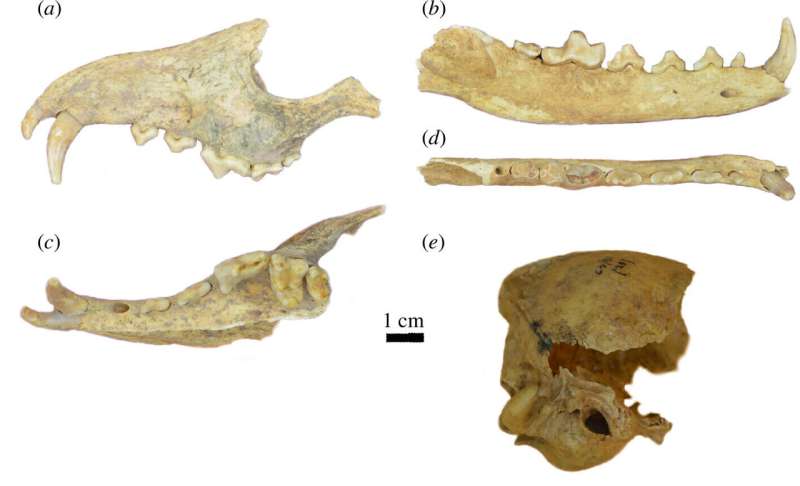April 10, 2024 report
This article has been reviewed according to Science X's editorial process and policies. Editors have highlighted the following attributes while ensuring the content's credibility:
fact-checked
peer-reviewed publication
trusted source
proofread
Fox bones found in ancient Argentinian burial site might have been from a human pet

A team of archaeologists, anthropologists and evolutionary specialists from Argentina, the U.K. and Germany has found possible evidence of a tamed fox living with a human hunter/gatherer companion, approximately 1,500 years ago in what is now Argentina. In their paper published in the journal Royal Society Open Science, the group describes where the fox remains were found, their condition, and other factors that led them to believe that the fox may have been an ancient pet.
Dogs have been kept as domesticated pets for thousands of years, but little evidence has been found of the domestication of other canines. In this new effort, the research team found possible evidence of an ancient, extinct species of fox that appears to have been domesticated.
The remains of a single fox were found buried with a human as the researchers were excavating at the Cañada Seca site, located approximately 210 kilometers from Mendoza, Argentina. The site was found in 1991, and since that time, the remains of 24 human hunter/gatherer people have been found there. They have been dated to approximately 1,500 years ago.
Initial study of the fox suggested it was of the Lycalopex family, a common genus of foxes in South America. A closer look showed that it was instead a Dusicyon avus—a now extinct species of fox that once lived in the area. After studying its nitrogen and carbon isotopes, the researchers determined that the fox had subsisted on a diet mainly consisting of plant material—the same diet as the human in the grave next to it. Foxes, the researchers note, typically eat a lot of meat. That this one did not suggests it was eating the same food as the human, which further suggests the two were living together.
The research team suggests that the fox had been domesticated and served as a companion or pet for the human. Prior research has shown that Dusicyon avus went extinct as the climate in the area changed upon the arrival of Europeans into the region—which coincided with the introduction of European dogs to the area.
More information: Cinthia C. Abbona et al, Patagonian partnerships: the extinct Dusicyon avus and its interaction with prehistoric human communities, Royal Society Open Science (2024). DOI: 10.1098/rsos.231835
Journal information: Royal Society Open Science
© 2024 Science X Network




















